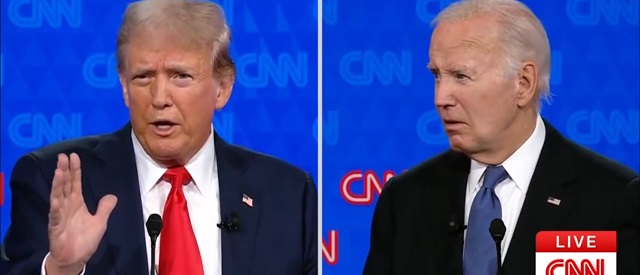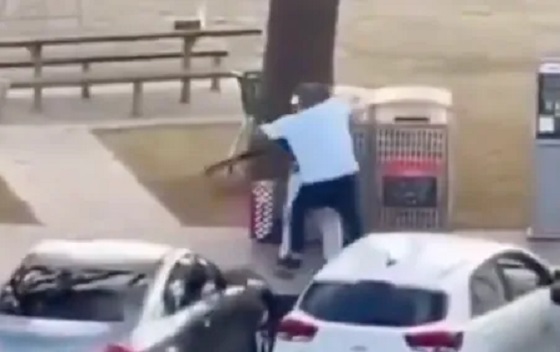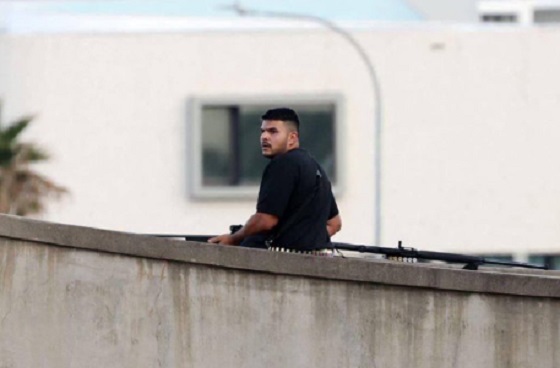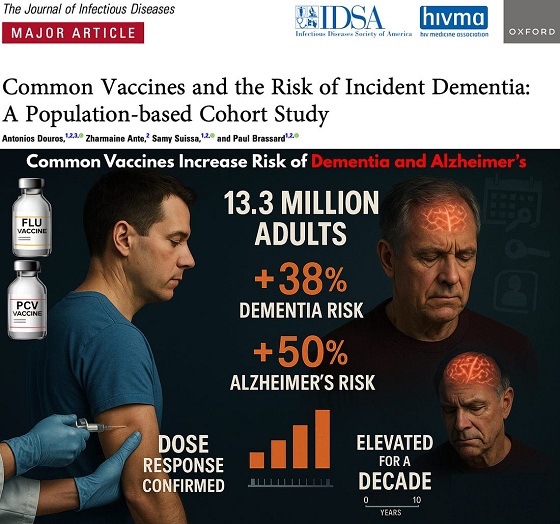Crime
Biden’s Illegal Immigration Problem Has Gone From Bad To Worse As High-Profile Murders Rock US

 From the Daily Caller News Foundation
From the Daily Caller News Foundation
A slate of high-profile crimes against women, allegedly committed at the hands of illegal migrants, has brought the issue of illegal immigration into sharper focus as the 2024 presidential election draws closer.
The killing of a nursing student in Georgia, the rape and murder of mother of five in Maryland, the strangulation killing of 12-year-old girl in Texas and several other significant local crimes has steadily compiled in recent months, prompting the passage of new legislation at the state level and keeping immigration in the news. The negative headlines have forced President Joe Biden, already dealing with low marks on immigration due to the ongoing border crisis, to remain on the defensive.
Biden was pushed into speaking about one significant murder during his most recent State of the Union speech.
“Lincoln [Laken] Riley, an innocent young woman who was killed,” Biden began to say during the 2024 State of the Union address. The president was speaking about border security when Georgia GOP Rep. Marjorie Taylor Greene yelled at him to “say her name.”
Biden held up a pin given to him by Greene and began to speak about the murder that took place a month prior.
“By an illegal. That’s right,” he said. “But how many of thousands of people are being killed by legals? To her parents, I say: My heart goes out to you. Having lost children myself, I understand.”
Riley — a nursing student living in Athens, Georgia — was abducted and murdered while jogging near the University of Georgia campus on Feb. 22. She died from blunt force trauma to the head, a coroner determined.
José Antonio Ibarra, a 26-year-old Venezuelan national, was subsequently arrested for her murder. Immigration and Customs (ICE) later confirmed that Ibarra entered the country illegally, further sparking statewide and national backlash.
The murder was followed by a recall campaign against Athens, Georgia, Mayor Kelly Girtz, the sheriff and the district attorney, with constituents calling on them to resign. Despite Girtz repeatedly saying in public that Athens was not a “sanctuary” city, unearthed emails revealed the mayor stating that he supported the town’s current policy of not being fully cooperative with immigration detainer requests.
At the state level, Riley’s killing was followed by Georgia Gov. Brian Kemp, a Republican, signing into law legislation that sheriffs cooperate with federal immigration authorities or else risk losing state funding. The new law mandates local jailers hold any foreign national in their custody when they are wanted by ICE agents.
As more details emerged about how Ibarra was able to be released into the U.S. and his brother’s alleged ties to a Venezuelan prison gang former President Donald Trump, an immigration hawk, highlighted the crime on the campaign trail. The Republican candidate met with Riley’s family at a Georgia campaign rally in March, and was photographed embracing them before a crowd.
“He’s got no remorse, he’s got no regret. He’s got no empathy,” Trump said of the current president. “No compassion, and worst of all, he has no intention of stopping the deadly invasion that stole precious Laken’s beautiful, American life.”
Riley’s killing proved to be just the first local crime involving immigration this year that rocketed to national attention.
The body of 12-year-old Jocelyn Nungaray was found floating in a north Houston creek in June. Following several days of investigation, local law enforcement arrested two Venezuelan nationals, 21-year-old Johan Jose Rangel Martinez and 26-year-old Franklin Jose Pena Ramos.
DNA tests determined that the 12-year-old had been sexually assaulted before she was strangled to death. Prosecutors believe both men tied her up, pulled her pants down, sexually assaulted her and then suffocated her before dumping her body in a nearby creek.
Federal immigration authorities soon confirmed that both men were living in the U.S. illegally, with one of them having only been in the country less than a month before allegedly killing the young girl. The incident immediately attracted national attention, with the House Homeland Security Committee later publishing a report that questioned why both men were released into the U.S. when there was more than enough detention space to keep them in physical detention at the time they illegally crossed the border.
The alleged crime was not forgotten by Trump, even moments before the first 2024 presidential debate. The former president called Jocelyn’s mother just 10 minutes before his first debate with Biden to express his condolences, a gesture that reportedly “shocked” her, according to the New York Post.
It wasn’t the only time Trump reached out to an angel family that month.
The family of Rachel Morin, a Maryland mother of five who was allegedly murdered by an illegal migrant, revealed last month they were “deeply touched” by Trump’s outreach following news that a suspect had finally been apprehended.
“I am deeply touched by President Trump’s kindness and concern,” Patty Morin, Rachel’s mother, said in a statement released by the family’s attorney. “He was genuine and truly wanted to know how our family was coping.”
Authorities confirmed that Morin’s alleged killer, 23-year-old Victor Antonio Martinez-Hernandez, is also wanted for the murder of a woman in his home country of El Salvador — making him one of many illegal migrants who were able to enter the U.S. despite being wanted abroad for various heinous crimes.
The slate of killings have put a microscope on illegal immigration, a topic already of major concern for American voters as the border crisis has raged on. Under Biden, Border Patrol agents have encountered more than seven million migrants crossing illegally into the U.S. between ports of entry, according to the latest data by Customs and Border Protection (CBP).
Biden has enjoyed, very recently, a slowdown of migrant apprehensions thanks in large part to a crackdown by the Mexican government and an executive order last month that seeks to control the number of migrants seeking asylum. However, critics maintain that the record levels of illegal migration experienced under his tenure remain a problem of his doing.
In the first year of his presidency, Biden undertook 296 executive actions on immigration, according to an analysis by the Migration Policy Institute. Of those presidential proclamations, 89 specifically reversed or began the process of undoing Trump’s immigration policies — and Biden has undone major Trump-era policy initiatives, such as the shutdown of the Remain in Mexico program and the nixing of new border wall construction.
The president has also recently granted mass amnesty to half a million illegal migrants married to U.S. citizens — a move that critics say will only encourage more illegal immigration.
“There’s no reason to doubt that the Biden administration — with its history of paroling inadequately vetted, inadmissible aliens into the country — will rubber-stamp every application under the President’s executive order, thus granting half a million or more illegal immigrants permanent residency and, eventually, citizenship,” Erik Ruark, director of research for NumbersUSA, said in a statement to the Daily Caller News Foundation.
“Amidst an historic border crisis, President Biden’s illegal amnesty sends would-be migrants the message that our borders remain wide open, and that they will eventually be rewarded if they can get into the country,” Ruark continued.
The White House did not respond to a request for comment from the DCNF.
(Featured Image Media Credit: Screenshot/Rumble/CNN)
Crime
Hero bystander disarms shooter in Australian terror attack

Insane footage shows a bystander attacking and disarming one of the terrorists, who appears to have been armed with a long rifle, during today’s shooting attack on an event celebrating Hanukkah at Bondi Beach in Sydney, Australia. pic.twitter.com/mJceco22bJ
— OSINTdefender (@sentdefender) December 14, 2025
The chaos that struck Australia on Sunday night produced one moment of astonishing courage: a Sydney shopkeeper, armed with nothing but instinct and grit, charged a gunman at Bondi Beach and wrestled the rifle out of his hands as terrified families ran for cover. Authorities say the act likely prevented even more deaths in what officials have already called an antisemitic terror attack that left 12 people dead and dozens wounded during a Hanukkah celebration along the water.
The hero has been identified as 43-year-old fruit shop owner Ahmed Al Ahmed, a father of two who happened to be nearby when gunfire erupted at the beachfront event “Hanukkah by the Sea,” which had drawn more than 200 people. Footage captured the moment he marched toward the shooter, grabbed hold of the rifle, and overpowered him in a brief, violent struggle. As the gunman hit the pavement, Al Ahmed momentarily pointed the weapon back at him but didn’t fire, instead placing it against a tree before another attacker opened up from a bridge above. He was hit in the hand and shoulder and is now recovering after emergency surgery.
A relative told Australia’s Channel Seven that Al Ahmed had never handled a gun in his life. “He’s a hero — he’s 100 percent a hero,” the family member said. New South Wales Premier Chris Minns echoed the praise, calling the scene “unbelievable,” adding, “A man walked up to someone who had just fired on the community and single-handedly disarmed him. Many people are alive tonight because of his bravery.”
Police say two shooters stepped out of a vehicle along Campbell Parade around 6:40 p.m. and began firing toward the beach. One gunman was killed, the other is in custody in critical condition. Detectives are also investigating whether a third attacker was involved, and bomb units swept the area after reports that an explosive device may have been planted beneath a pedestrian bridge. The toll is staggering: 12 dead, including one shooter, and at least 29 wounded — among them children and two police officers.
Prime Minister Anthony Albanese condemned what he called “a targeted attack on Jewish Australians on the first day of Hanukkah,” saying, “What should have been a night of joy and peace has been shattered by this horrifying evil attack.” Emergency crews flooded the beach as hundreds of panicked people sprinted away from the gunfire. Video shows one attacker firing down toward the sand from the bridge behind Bondi Park before being shot himself in a final standoff captured by drone footage. Both gunmen appeared to be carrying ammunition belts, with witnesses estimating up to 50 rounds were fired.
Australian police have cordoned off properties linked to the suspects and continue to canvass Bondi for additional threats. What remains clear is that Sunday’s attack was met with extraordinary acts of self-sacrifice, none more dramatic than a shopkeeper from Sutherland who walked into gunfire to stop further slaughter.
Crime
Terror in Australia: 12 killed after gunmen open fire on Hanukkah celebration

One of the suspected gunmen of the Bondi Beach massacre shooting in Australia has been identified as Naveed Akram
What was supposed to be a peaceful Sunday evening celebration of Hanukkah on one of the world’s most famous beaches instead descended into chaos and bloodshed, as two attackers opened fire on crowds gathered at Sydney’s Bondi Beach, killing 12 people — including one of the gunmen — and injuring at least 11 others.
The violence erupted shortly after 5 p.m. local time, just as more than a thousand people were gathering for “Hanukkah by the Sea,” an annual event held near a playground at the Bondi foreshore. According to Australian outlets, the shooting began as families were lighting candles and singing, sending parents scrambling to shield children and worshippers diving for cover along the promenade.
New South Wales Premier Chris Minns confirmed late Sunday that one attacker was killed at the scene and a second was arrested. He said the evidence already points unmistakably toward an anti-Jewish terror attack. “What should have been a night of peace and joy was shattered by a horrifying, evil attack,” Minns told reporters, noting investigators believe the plot was “designed to target Sydney’s Jewish community.”
NSW Police Commissioner Mal Lanyon said well over a thousand people were present when the shooting started, including two state police officers who were among those struck by gunfire, according to ABC News. Police also located what appeared to be an improvised explosive device in the vicinity shortly after the initial gunfire. Bomb technicians neutralized the device while officers locked down the area and urged residents to shelter in place.
Around 9 p.m., with ambulances and tactical units pouring in, authorities described the unfolding chaos as a “developing incident” and warned anyone nearby to stay indoors. Multiple victims were treated on the sand and the surrounding walkways before being rushed to hospitals across Sydney.
As investigators piece together the attackers’ movements and motive, officials say the toll could have been even worse given the size of the crowd and the presence of children throughout the event. What remains is a shaken city, a grieving Jewish community, and a country once again confronting the threat of political and religious extremism on its own soil.
-

 Bruce Dowbiggin2 days ago
Bruce Dowbiggin2 days agoWayne Gretzky’s Terrible, Awful Week.. And Soccer/ Football.
-

 espionage1 day ago
espionage1 day agoWestern Campuses Help Build China’s Digital Dragnet With U.S. Tax Funds, Study Warns
-

 Focal Points20 hours ago
Focal Points20 hours agoCommon Vaccines Linked to 38-50% Increased Risk of Dementia and Alzheimer’s
-

 Opinion2 days ago
Opinion2 days agoThe day the ‘King of rock ‘n’ roll saved the Arizona memorial
-

 Automotive10 hours ago
Automotive10 hours agoThe $50 Billion Question: EVs Never Delivered What Ottawa Promised
-

 Agriculture2 days ago
Agriculture2 days agoCanada’s air quality among the best in the world
-

 Business1 day ago
Business1 day agoCanada invests $34 million in Chinese drones now considered to be ‘high security risks’
-

 Health18 hours ago
Health18 hours agoThe Data That Doesn’t Exist



